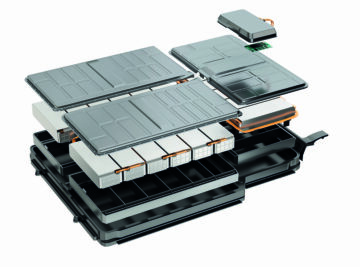
Making FMCG manufacturing more sustainable using intelligent energy management. By Patricia Torres, Industry Marketing Manager Food and Commodities Solutions, OMRON Industrial Automation Europe
Some factory managers take the view that ‘if it ain’t broke, don’t fix it’. This approach is understandable and, in many instances, valid – particularly if it relates to a process that took a long time to get right in the first place, or a line or machine that is running reliably.
However, as fast-moving consumer goods manufacturers embark on net zero journeys, a passive attitude towards factory automation won’t cut it. Reducing Scope 1 GHG emissions in the order of magnitude that is necessary to meet 2050 net zero targets will entail optimising and modifying existing plant and processes – even if they are working perfectly.
In the last few years, contributing to the carbon neutrality efforts of our customers through intelligent energy management has become increasingly important. Here are some of the ways in which we are supporting companies in their journey to decarbonise manufacturing operations.
AMRs: fossil-free moving
AMRs (autonomous mobile robots) are the future of sustainable materials handling in manufacturing environments. They are battery-powered, which means they are a fossil-free alternative to forklifts for transporting boxes and pallets, and they are intelligent enough to return to the charging station when they need to. They also represent a dynamic replacement for conventional linear conveyors, and unlike traditional autonomously guided vehicles (AGVs), require no facility modifications, such as floor magnets or navigational beacons.
Palletising cobots enable mixed pallets
With the rise of e-commerce and the trend towards HMLV (high mix low volume) manufacturing, mixed pallets are becoming more popular. The challenge with multi-product pallets is optimising the various patterns to make better use of space in transit and storage, as ultimately, fewer pallets equal lower per unit carbon emissions. However, this is not easy as it requires complex programming. OMRON has overcome this challenge with the development of a new cobot palletising solution that can help manufacturers and packers load mixed pallets more efficiently. The palletiser is based on OMRON’s NX1 series modular machine controller with a specialised function block and intelligent vision embedded into the arm.
Energy saving inverters
Everything that moves in a factory is driven by energy, whether a motor, pump, drive, fan or compressor. Compressed air is one of the worst culprits when it comes to wasted energy. Steps such as using smaller compressors for reduced needs, installing electronic speed variators, installing heat recovery systems and limiting pressure loss can make compressors more energy efficient.
With pumps, optimising flow control and motor performance will help increase energy efficiency – and motors should meet the requirements of IE4. The importance of inverters shouldn’t be overlooked either – replacing old inverters with newer ones can make a huge difference to the energy efficiency of equipment. Inverters made 20 years ago might still work but they won’t incorporate regenerative energy capabilities – inverter technology has advanced considerably in recent years.
Smart sensors and analytics
However, the reductions in energy usage that are needed to achieve ambitious net zero targets can rarely be achieved on the factory floor alone, which is where smart use strategies that harness the IoT (Internet of Things) and AI (Artificial Intelligence) models come into play for analysing data and identifying efficiencies. To this end, OMRON has developed its i-BELT service, which transforms real-time production line data into meaningful solutions for eliminating inefficiencies and implementing improvements. Solutions can be as simple as adjusting settings on inverters.
This approach was demonstrated in a clean room scenario where electricity was being consumed without much consideration to cost. When i-BELT was used to monitor the air and operational situations at a factory around the clock, it was found that there were hours in which production and quality were unaffected when the air-conditioning was turned off.
Sensorisation is the starting point
One of the issues we come up against time and time again when companies call on us to identify opportunities for optimising energy usage is that they don’t have the necessary data because they don’t know how to collect it. To collect data, you need sensors and old lines will not have been designed with sensors – or at least not with sensors that are located correctly and are accurate enough for smart monitoring. Therefore, sensorisation is a pre-requisite of any data management platform.
Some quick fixes…
Whilst there are some areas of manufacturing where small changes can lead to big savings, reaching net zero will require fundamental changes in other more complex areas, such as the collection and analysis of production data and the movement of goods around the factory floor. Innovative new technologies will play a role but it’s a myth that manufacturing facilities have to be new to be energy efficient. There is plenty that can be done to make existing factories and production lines more sustainable.
For more information, please visit https://industrial.omron.co.uk/en/home.
- SEO Powered Content & PR Distribution. Get Amplified Today.
- PlatoData.Network Vertical Generative Ai. Empower Yourself. Access Here.
- PlatoAiStream. Web3 Intelligence. Knowledge Amplified. Access Here.
- PlatoESG. Carbon, CleanTech, Energy, Environment, Solar, Waste Management. Access Here.
- PlatoHealth. Biotech and Clinical Trials Intelligence. Access Here.
- Source: https://envirotecmagazine.com/2024/03/07/even-if-it-aint-broke-you-still-oughta-fix-it-making-fmcg-manufacturing-more-sustainable/
- :has
- :is
- :not
- :where
- $UP
- 1
- 20
- 20 years
- 2050
- a
- accurate
- Achieve
- achieved
- adjusting
- advanced
- again
- against
- ago
- AI
- AIR
- alone
- also
- alternative
- ambitious
- analysing
- analysis
- and
- any
- approach
- ARE
- areas
- ARM
- around
- artificial
- artificial intelligence
- AS
- At
- attitude
- Automation
- autonomous
- autonomously
- banner
- banners
- based
- BE
- because
- become
- becoming
- been
- being
- Better
- Big
- Block
- boxes
- Broke
- but
- by
- call
- CAN
- capabilities
- carbon
- carbon emissions
- Carbon Neutrality
- challenge
- Changes
- charging
- clean
- click
- Clock
- CO
- collect
- collection
- come
- comes
- Commodities
- Companies
- complex
- considerably
- consideration
- consumed
- consumer
- content
- contributing
- control
- controller
- conventional
- correctly
- Cost
- Customers
- Cut
- data
- data management
- demonstrated
- designed
- developed
- Development
- difference
- digital
- disabled
- done
- Dont
- drive
- driven
- dynamic
- e-commerce
- easy
- edition
- efficiencies
- efficiency
- efficient
- efficiently
- efforts
- either
- electricity
- Electronic
- eliminating
- embark
- embedded
- Emissions
- enable
- end
- energy
- energy efficiency
- enough
- environments
- Envirotec
- equal
- equipment
- Ether (ETH)
- Even
- Event
- existing
- facilities
- Facility
- factories
- factory
- fan
- fast-moving
- few
- fewer
- First
- Fix
- Floor
- flow
- fmcg
- food
- For
- found
- function
- fundamental
- future
- get
- GHG
- GHG emissions
- goods
- guided
- Handling
- harness
- Have
- help
- here
- High
- HOURS
- How
- How To
- However
- HTTPS
- huge
- identify
- identifying
- if
- image
- implementing
- importance
- important
- improvements
- in
- In other
- incorporate
- Increase
- increasingly
- industrial
- industrial automation
- industry
- inefficiencies
- information
- innovative
- installing
- instances
- Intelligence
- Intelligent
- Internet
- internet of things
- into
- iot
- Iot (internet of things)
- issues
- IT
- ITS
- journey
- Journeys
- jpg
- Know
- Last
- lead
- least
- limiting
- Line
- linear
- lines
- load
- located
- Long
- long time
- loss
- Low
- lower
- machine
- made
- Magnets
- magnitude
- make
- management
- manager
- Managers
- Manufacturers
- manufacturing
- many
- Marketing
- materials
- meaningful
- means
- Meet
- might
- mix
- mixed
- Mobile
- models
- Modifications
- modular
- Monitor
- monitoring
- more
- Motor
- Motors
- movement
- moves
- much
- necessary
- Need
- needed
- needs
- net
- neutrality
- New
- New technologies
- newer
- no
- None
- of
- off
- Old
- on
- ONE
- ones
- operational
- Operations
- opportunities
- optimising
- or
- order
- Other
- our
- Overcome
- particularly
- passive
- patterns
- per
- perfectly
- performance
- Pixel
- Place
- plant
- platform
- plato
- Plato Data Intelligence
- PlatoData
- Play
- Play For
- please
- Plenty
- Point
- Popular
- pressure
- process
- processes
- Production
- Programming
- pump
- pumps
- qualified
- quality
- Quick
- rarely
- reaching
- real-time
- recent
- recovery
- Reduced
- reducing
- reductions
- regenerative
- relates
- replacement
- represent
- require
- Requirements
- requires
- return
- right
- Rise
- robots
- Role
- Room
- running
- saving
- Savings
- scenario
- scope
- sensors
- Series
- service
- settings
- should
- sign
- Simple
- situations
- small
- smaller
- smart
- solution
- Solutions
- some
- Space
- specialised
- speed
- Starting
- station
- Steps
- Still
- storage
- strategies
- such
- Supporting
- sustainable
- Systems
- Take
- targets
- Technologies
- Technology
- that
- The
- The Future
- their
- There.
- therefore
- they
- things
- this
- Through
- time
- to
- took
- towards
- traditional
- transforms
- transit
- transporting
- Trend
- Turned
- Ultimately
- unaffected
- understandable
- unit
- unlike
- us
- Usage
- use
- used
- using
- valid
- various
- Vehicles
- View
- vision
- Visit
- volume
- was
- wasted
- ways
- we
- were
- when
- whether
- which
- will
- with
- without
- Work
- working
- Worst
- years
- you
- zephyrnet
- zero







